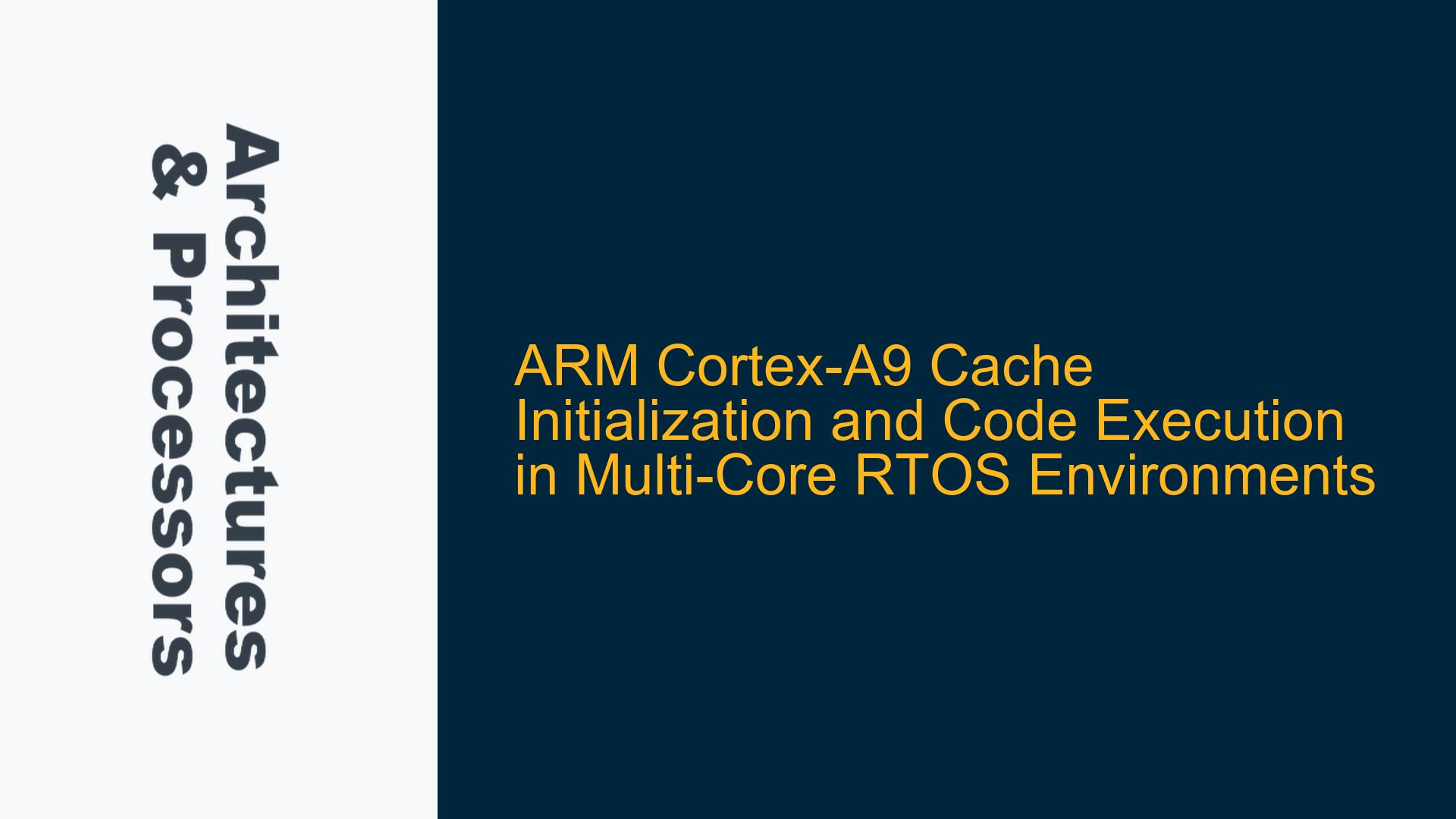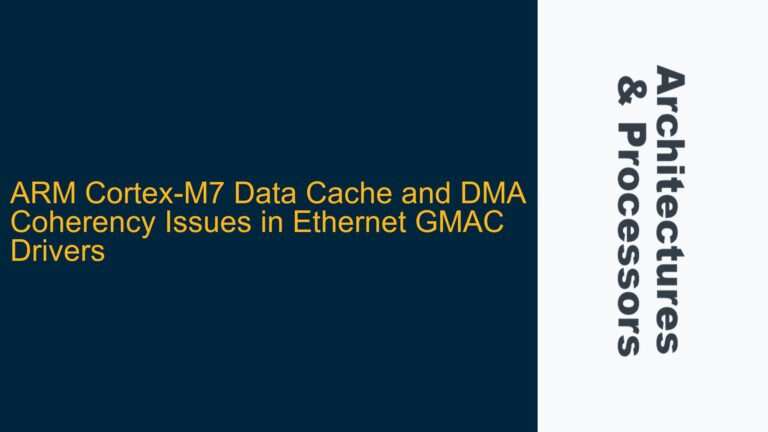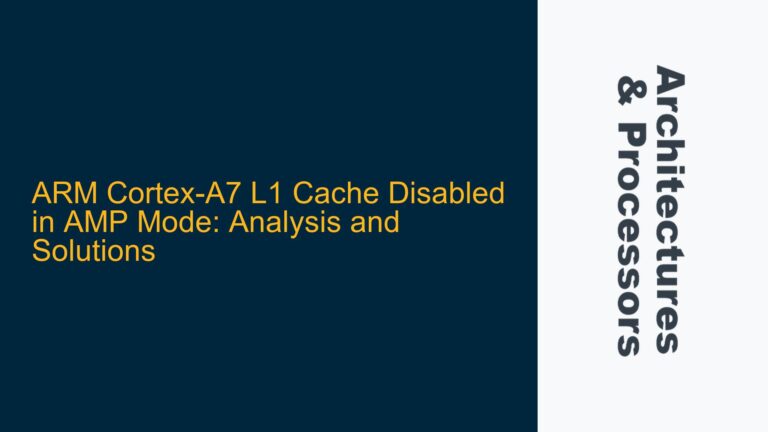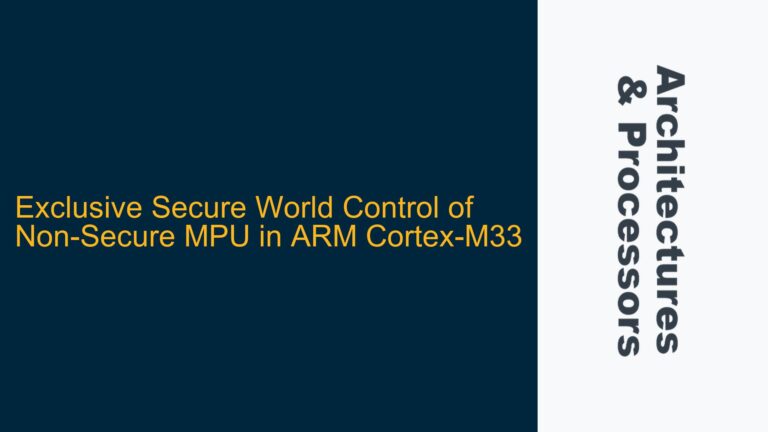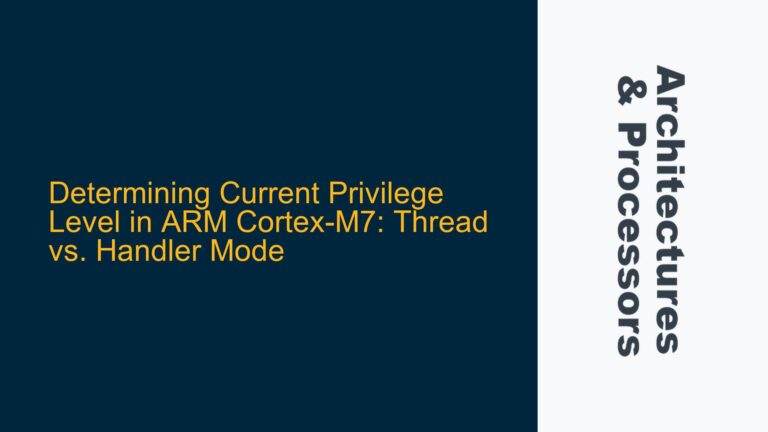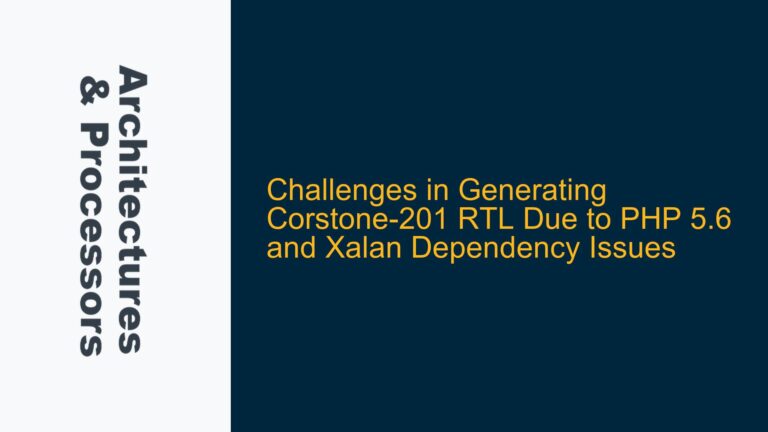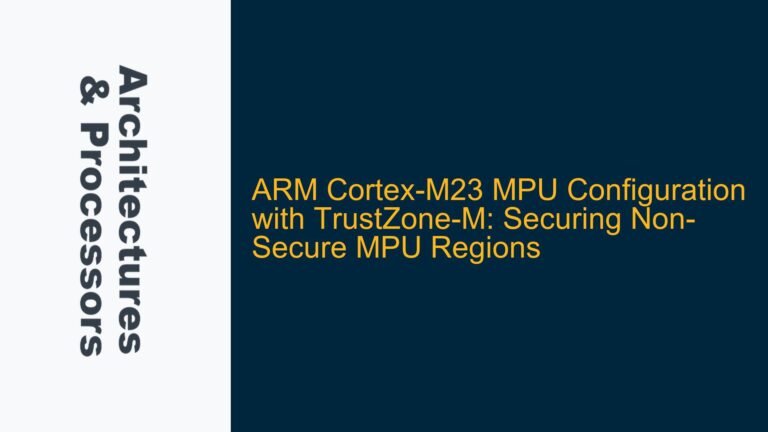ARM Cortex-A9 Cache Behavior During Secondary Core Initialization
In ARM Cortex-A9 multi-core systems, cache initialization and management are critical for ensuring correct and efficient execution of code, especially in environments where each core runs its own instance of a Real-Time Operating System (RTOS). The Cortex-A9 processor features a unified L1 cache and an optional L2 cache, both of which are critical for performance. The L1 cache is typically split into instruction and data caches, while the L2 cache is unified. The Cortex-A9 also supports cache coherency through the ARMv7-A memory model, which includes mechanisms like cache maintenance operations and memory barriers to ensure data consistency across cores.
In the described scenario, the primary core initializes the caches and Memory Management Unit (MMU) for all secondary cores. The memory is flat-mapped, meaning there is a direct correspondence between physical and virtual addresses. The primary core configures the memory regions for secondary cores as Write-Back (WB) for code and Write-Back No-Allocate (WBNA) for data. The primary core then writes the RTOS code from an eMMC storage device into the physical memory space designated for the secondary cores. The key question is whether the code space in the secondary cores’ memory needs to be invalidated before the secondary cores are started.
The Cortex-A9 cache architecture operates on the principle of cache lines, which are typically 32 bytes in size. When data is written to memory, it is stored in the cache if the corresponding memory region is cacheable. However, the cache does not automatically invalidate old data unless explicitly instructed to do so. This behavior is crucial when dealing with code execution, as stale data in the cache can lead to incorrect instruction fetches and unpredictable behavior.
The primary core writes the RTOS code into the physical memory space of the secondary cores. Since the memory is configured as WB for code, the written data is cached in the L1 and L2 caches. However, the secondary cores are not yet active, so they have not accessed this memory region. When a secondary core starts executing code, it will begin fetching instructions from its designated memory region. At this point, the cache will attempt to fill with the instructions from memory. If the cache contains stale data, the secondary core may execute incorrect instructions, leading to system instability or crashes.
The ARMv7-A architecture provides cache maintenance operations to manage cache coherency. These operations include cache invalidation, which removes stale data from the cache, and cache cleaning, which writes dirty data back to memory. In the context of secondary core initialization, cache invalidation ensures that the cache does not contain stale data when the secondary core begins executing code. This is particularly important in multi-core systems, where cache coherency must be maintained across all cores.
The primary core’s role in initializing the caches and MMU for the secondary cores is critical for ensuring correct system behavior. By configuring the memory regions as WB for code and WBNA for data, the primary core ensures that code execution is optimized for performance while data regions are protected from unnecessary cache allocations. However, the primary core must also ensure that the cache is in a consistent state before the secondary cores are started. This involves performing cache maintenance operations to invalidate any stale data in the cache.
In summary, the Cortex-A9 cache architecture requires careful management during secondary core initialization to ensure correct code execution. The primary core must configure the caches and MMU, write the RTOS code into memory, and perform cache maintenance operations to invalidate stale data. Failure to do so can result in incorrect instruction fetches and system instability. The next section will explore the possible causes of cache-related issues in this scenario.
Cache Coherency and Stale Data Risks in Multi-Core Initialization
The primary cause of cache-related issues in the described scenario is the presence of stale data in the cache when the secondary cores begin executing code. Stale data can occur when the cache contains old or invalid data that does not reflect the current state of memory. In multi-core systems, cache coherency is maintained through hardware mechanisms and software interventions. However, during the initialization phase, the primary core must take explicit steps to ensure that the cache is in a consistent state before the secondary cores are started.
One possible cause of stale data in the cache is the lack of cache invalidation after the primary core writes the RTOS code into memory. When the primary core writes data to a cacheable memory region, the data is stored in the cache. If the cache is not invalidated before the secondary cores start executing code, the secondary cores may fetch stale data from the cache instead of the updated data in memory. This can lead to incorrect instruction execution and system instability.
Another potential cause of cache-related issues is the timing of cache maintenance operations. The ARMv7-A architecture provides cache maintenance operations that can be performed at different levels of granularity, including by virtual address, by set/way, or for the entire cache. The timing of these operations is critical, as performing them too early or too late can result in inconsistent cache states. For example, if cache invalidation is performed before the primary core finishes writing the RTOS code into memory, the cache may still contain stale data when the secondary cores start executing code.
The configuration of the memory regions also plays a role in cache behavior. In the described scenario, the primary core configures the memory regions for secondary cores as WB for code and WBNA for data. The WB configuration allows the cache to store code data, which improves performance by reducing memory access latency. However, this also means that the cache must be managed carefully to avoid stale data. The WBNA configuration for data regions prevents the cache from allocating new data, which can help reduce cache pollution but does not eliminate the risk of stale data in the code regions.
The Cortex-A9 cache architecture includes mechanisms for maintaining cache coherency, such as the Cache Coherency Unit (CCU) and the Snoop Control Unit (SCU). These mechanisms ensure that all cores have a consistent view of memory. However, during the initialization phase, the primary core must take explicit steps to ensure cache coherency. This includes performing cache maintenance operations and using memory barriers to enforce the correct ordering of memory accesses.
In multi-core systems, cache coherency is particularly challenging due to the potential for race conditions and inconsistent cache states. The primary core must ensure that all cache maintenance operations are completed before the secondary cores are started. This requires careful synchronization and the use of memory barriers to enforce the correct ordering of operations. Failure to do so can result in inconsistent cache states and incorrect system behavior.
In summary, the primary causes of cache-related issues in the described scenario are the presence of stale data in the cache, improper timing of cache maintenance operations, and inadequate synchronization between the primary and secondary cores. The next section will provide detailed troubleshooting steps and solutions to address these issues.
Implementing Cache Invalidation and Synchronization for Secondary Core Initialization
To ensure correct cache behavior during secondary core initialization, the primary core must perform a series of cache maintenance operations and synchronization steps. These steps are designed to eliminate stale data from the cache and ensure that the secondary cores have a consistent view of memory when they start executing code.
The first step is to invalidate the cache after the primary core writes the RTOS code into memory. Cache invalidation removes stale data from the cache and ensures that the cache will be filled with the correct data when the secondary cores start executing code. The ARMv7-A architecture provides several cache invalidation operations, including the Data Cache Invalidate by Virtual Address (DC IVAC) operation and the Invalidate Entire Instruction Cache (ICIALLU) operation. The primary core should use these operations to invalidate the cache for the memory regions designated for the secondary cores.
The DC IVAC operation invalidates a specific cache line by virtual address. This operation is useful for invalidating specific memory regions, such as the code space for the secondary cores. The primary core should perform this operation after writing the RTOS code into memory to ensure that the cache does not contain stale data. The ICIALLU operation invalidates the entire instruction cache. This operation is useful for ensuring that the instruction cache is in a consistent state before the secondary cores start executing code.
In addition to cache invalidation, the primary core should use memory barriers to enforce the correct ordering of memory accesses. Memory barriers ensure that all previous memory operations are completed before subsequent operations are performed. The ARMv7-A architecture provides several memory barrier instructions, including the Data Synchronization Barrier (DSB) and the Instruction Synchronization Barrier (ISB). The primary core should use these instructions to ensure that all cache maintenance operations are completed before the secondary cores are started.
The DSB instruction ensures that all previous memory accesses are completed before subsequent instructions are executed. This instruction should be used after performing cache invalidation operations to ensure that the cache is in a consistent state before the secondary cores start executing code. The ISB instruction ensures that all previous instructions are completed before subsequent instructions are executed. This instruction should be used after the DSB instruction to ensure that the processor pipeline is flushed and the secondary cores start executing code from the correct memory location.
The primary core should also ensure that the MMU is configured correctly for the secondary cores. The MMU configuration determines how virtual addresses are translated into physical addresses and how memory regions are cached. The primary core should configure the MMU to map the memory regions for the secondary cores as WB for code and WBNA for data. This configuration ensures that code execution is optimized for performance while data regions are protected from unnecessary cache allocations.
Finally, the primary core should synchronize with the secondary cores to ensure that they start executing code only after the cache and MMU are in a consistent state. This can be achieved using inter-core communication mechanisms, such as spinlocks or semaphores. The primary core should set a flag or signal to indicate that the initialization is complete and the secondary cores can start executing code. The secondary cores should wait for this signal before starting execution to ensure that they have a consistent view of memory.
In summary, the primary core must perform cache invalidation, use memory barriers, configure the MMU, and synchronize with the secondary cores to ensure correct cache behavior during secondary core initialization. These steps are critical for eliminating stale data from the cache and ensuring that the secondary cores have a consistent view of memory when they start executing code. By following these steps, the system can achieve reliable and efficient operation in a multi-core RTOS environment.
